B2B Marketing Automation: Driving Business Growth

B2B marketing automation is revolutionizing how companies engage with their clients and prospects. At Drop Cowboy, we’ve seen firsthand how this powerful strategy can streamline operations and boost revenue.
Marketing automation for B2B businesses goes beyond simple email campaigns, encompassing lead scoring, personalized content delivery, and data-driven decision making. In this post, we’ll explore the key components of B2B marketing automation and show you how to implement them effectively in your organization.
What Is B2B Marketing Automation?
B2B marketing automation revolutionizes how companies engage with clients and prospects. This powerful strategy streamlines operations and boosts revenue through software-driven processes that automate repetitive marketing tasks.
The Foundation of B2B Marketing Automation
The core components of B2B marketing automation include:
- Lead Capture: Identifying potential customers through various digital touchpoints.
- Lead Scoring: Assessing a prospect’s readiness to buy based on their interactions.
- Lead Nurturing: Guiding prospects through the sales funnel with targeted content.
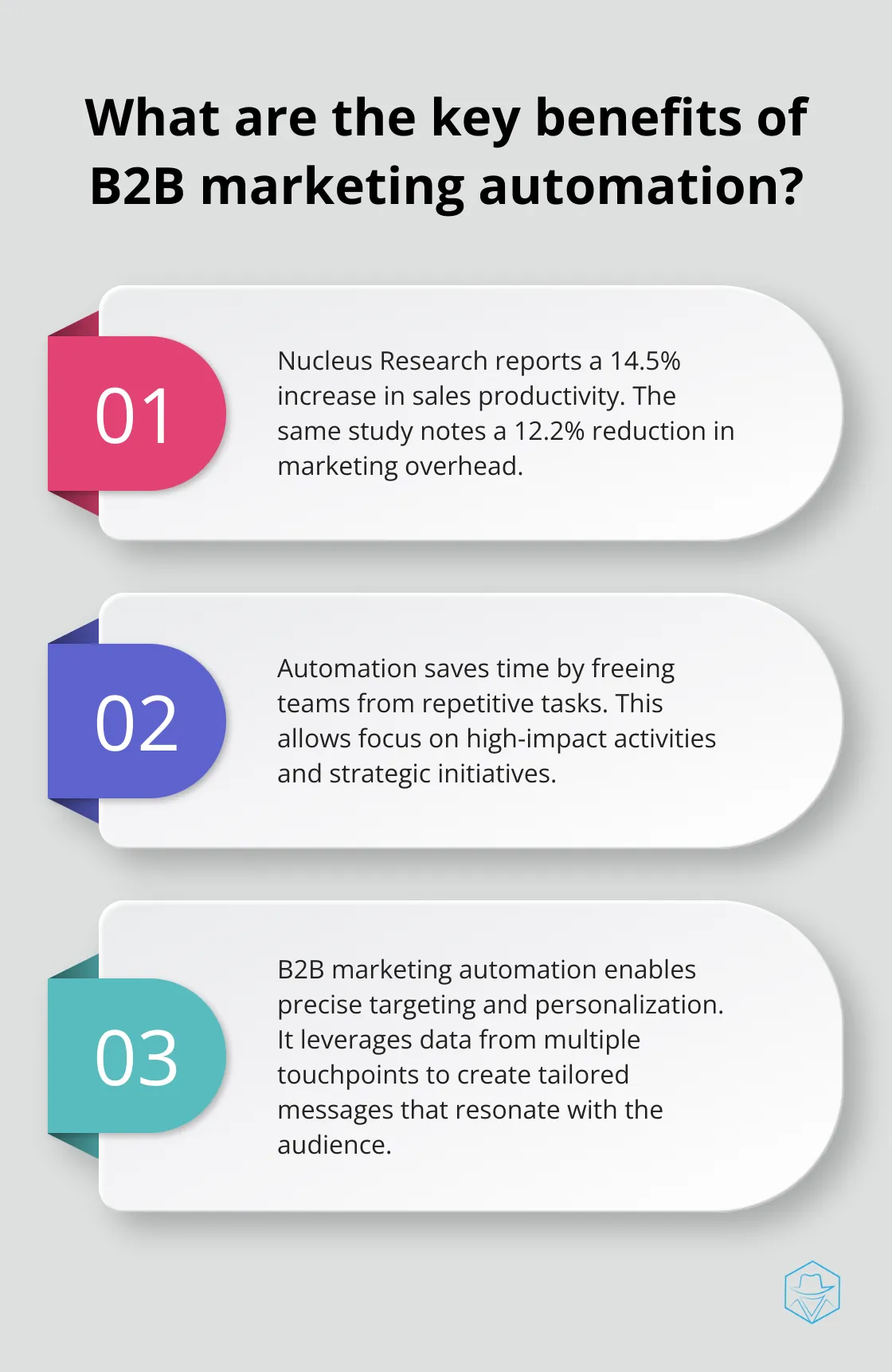
For instance, a software company might use automation to track website visitors, assign scores based on their behavior, and send tailored content to maintain their interest over time.
Email Marketing Automation: Beyond Simple Newsletters
Email automation transcends basic newsletters. It incorporates triggered emails based on specific actions or behaviors. A manufacturing firm could set up an automated sequence that sends product information, case studies, and pricing details to prospects who download a whitepaper (a common lead magnet in B2B).
B2B vs B2C: Distinct Automation Needs
B2B marketing automation differs significantly from B2C:
- Longer, more complex sales cycles (often involving multiple decision-makers)
- Focus on lead quality over quantity
- Emphasis on account-based marketing strategies
- Use of multi-touch attribution models
While a B2C company might aim to reach as many consumers as possible with a product offer, a B2B firm needs to identify and nurture high-value prospects over time. This difference reflects in the metrics used to measure success, with B2B often prioritizing sales qualified leads (SQLs) and customer lifetime value.
Tangible Benefits for B2B Businesses
The advantages of B2B marketing automation are substantial:
- Increased Sales Productivity: A study by Nucleus Research reports a 14.5% increase in sales productivity.
- Reduced Marketing Overhead: The same study notes a 12.2% reduction in marketing overhead.
- Time Savings: Automation frees up teams to focus on high-impact activities rather than repetitive tasks.
- Precise Targeting and Personalization: Leveraging data from multiple touchpoints allows for highly tailored messages that resonate with the audience.
- Advanced Analytics: Marketers can track the entire customer journey and optimize their strategies accordingly.
These benefits translate to real business growth and more efficient resource allocation.
The Power of Personalization in B2B
Personalization becomes particularly important in B2B, where decision-makers expect vendors to understand their specific needs and challenges. Automation enables businesses to create highly targeted messages based on a prospect’s industry, role, and previous interactions.
As we move into the next section on essential B2B marketing automation strategies, it’s clear that this technology offers immense potential for businesses looking to scale their marketing efforts and drive growth. Let’s explore how to harness these capabilities effectively.
Mastering B2B Marketing Automation Strategies
B2B marketing automation transforms how companies engage with clients and prospects. At Drop Cowboy, we’ve witnessed the power of these strategies to streamline operations and boost revenue. Let’s explore the most effective B2B marketing automation strategies that drive results in today’s competitive landscape.
Lead Scoring and Nurturing
Lead scoring and nurturing form the foundation of effective B2B marketing automation. Assigning values to leads based on behavior and demographics allows you to prioritize sales efforts and tailor your approach. A lead who downloads multiple whitepapers and attends a webinar might score higher than one who only visits your website once.
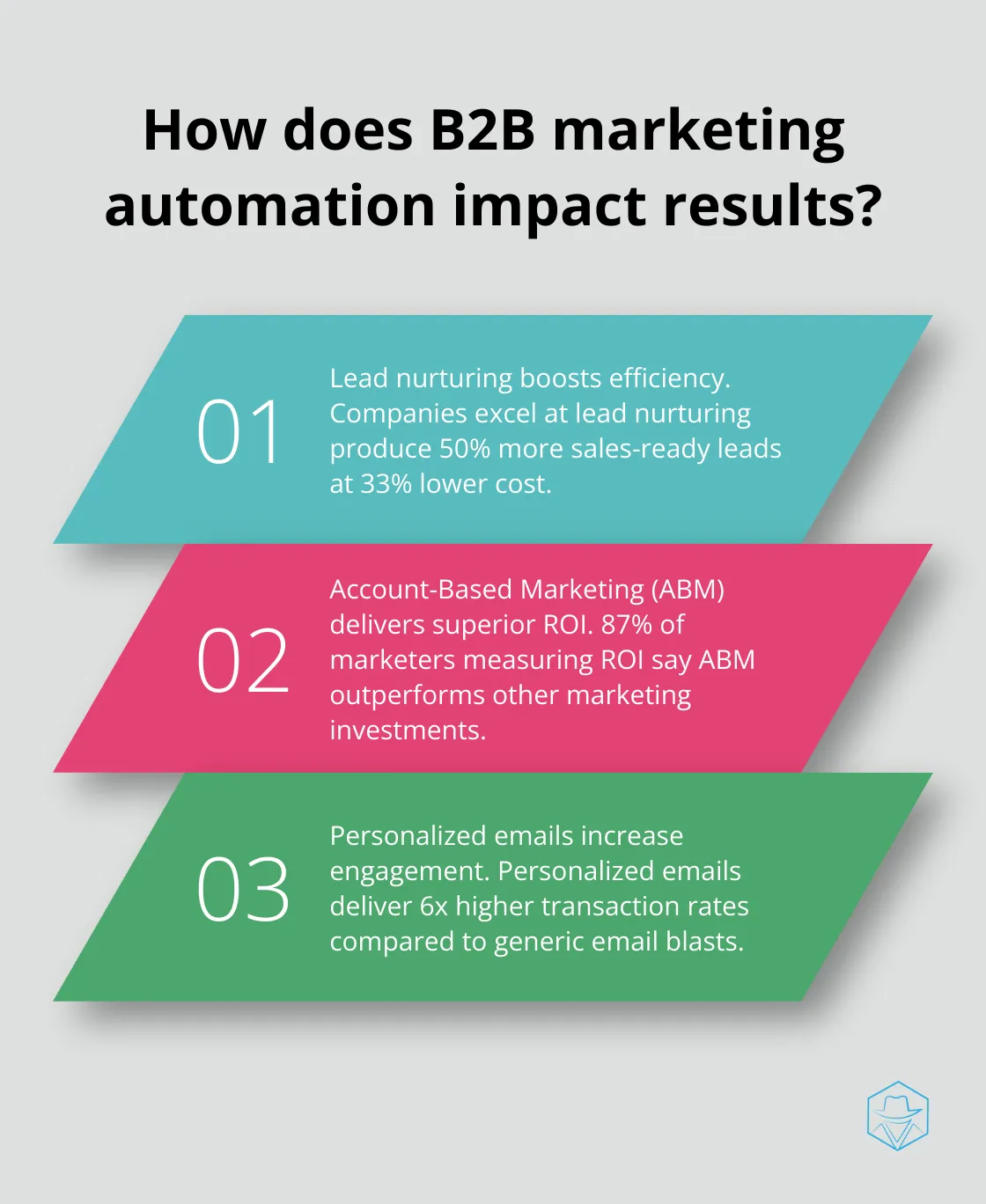
Nurturing these scored leads is essential. A study by Forrester Research shows that companies excelling at lead nurturing produce 50% more sales-ready leads at 33% lower cost. This process involves creating targeted communications that guide prospects through the buyer’s journey. You might send an introductory email, followed by industry-specific case studies, and then a personalized demo offer.
Account-Based Marketing (ABM)
Account-Based Marketing has gained significant traction in B2B circles (and for good reason). This strategy treats individual accounts as markets in their own right. ITSMA reports that 87% of marketers measuring ROI say ABM outperforms other marketing investments.
Automation scales ABM efforts effectively. You can use automation tools to identify high-value accounts, personalize content at scale, and coordinate multi-channel outreach. Set up automated workflows that trigger personalized ads, emails, and direct mail pieces based on specific account activities or milestones.
Personalized Email Campaigns
Email remains a powerhouse in B2B marketing, but generic blasts no longer suffice. Personalized email campaigns, powered by automation, significantly boost engagement. Experian found that personalized emails deliver 6x higher transaction rates.
Automation allows you to segment your audience and tailor your messaging based on factors like industry, job role, or stage in the buying cycle. You can also set up triggered emails based on specific actions. If a prospect views a product page multiple times, an automated email with more detailed information or a special offer could be sent.
Content Marketing Automation
Content reigns supreme in B2B marketing, but creating and distributing it effectively can consume time. Automation streamlines this process. Tools can schedule social media posts, distribute content across multiple channels, and even suggest optimal posting times based on audience engagement data.
Automation also aids in content personalization. You can use dynamic content blocks in your emails or on your website that change based on the viewer’s industry or previous interactions with your brand.
Social Media Automation
B2B social media marketing requires a human touch, but automation enhances its efficiency and effectiveness. Tools can schedule posts, monitor brand mentions, and even identify potential leads based on social media activity.
You might set up automated alerts for industry-specific keywords or competitor mentions. This allows your team to quickly join relevant conversations, positioning your brand as a thought leader and potentially uncovering new business opportunities.
As we move into the next section on implementing B2B marketing automation, it’s clear that choosing the right platform and integrating it with your existing tools will be key to leveraging these powerful strategies effectively.
How to Implement B2B Marketing Automation
Selecting the Right Platform
The first step in implementing B2B marketing automation involves choosing the right platform. This decision will significantly impact your automation efforts. You should look for a platform that offers robust lead scoring capabilities, seamless CRM integration, and advanced analytics. Companies that excel at lead nurturing generate 50% more sales-ready leads at 33% lower cost (according to a Forrester report). Your chosen platform should support this level of lead nurturing efficiency.
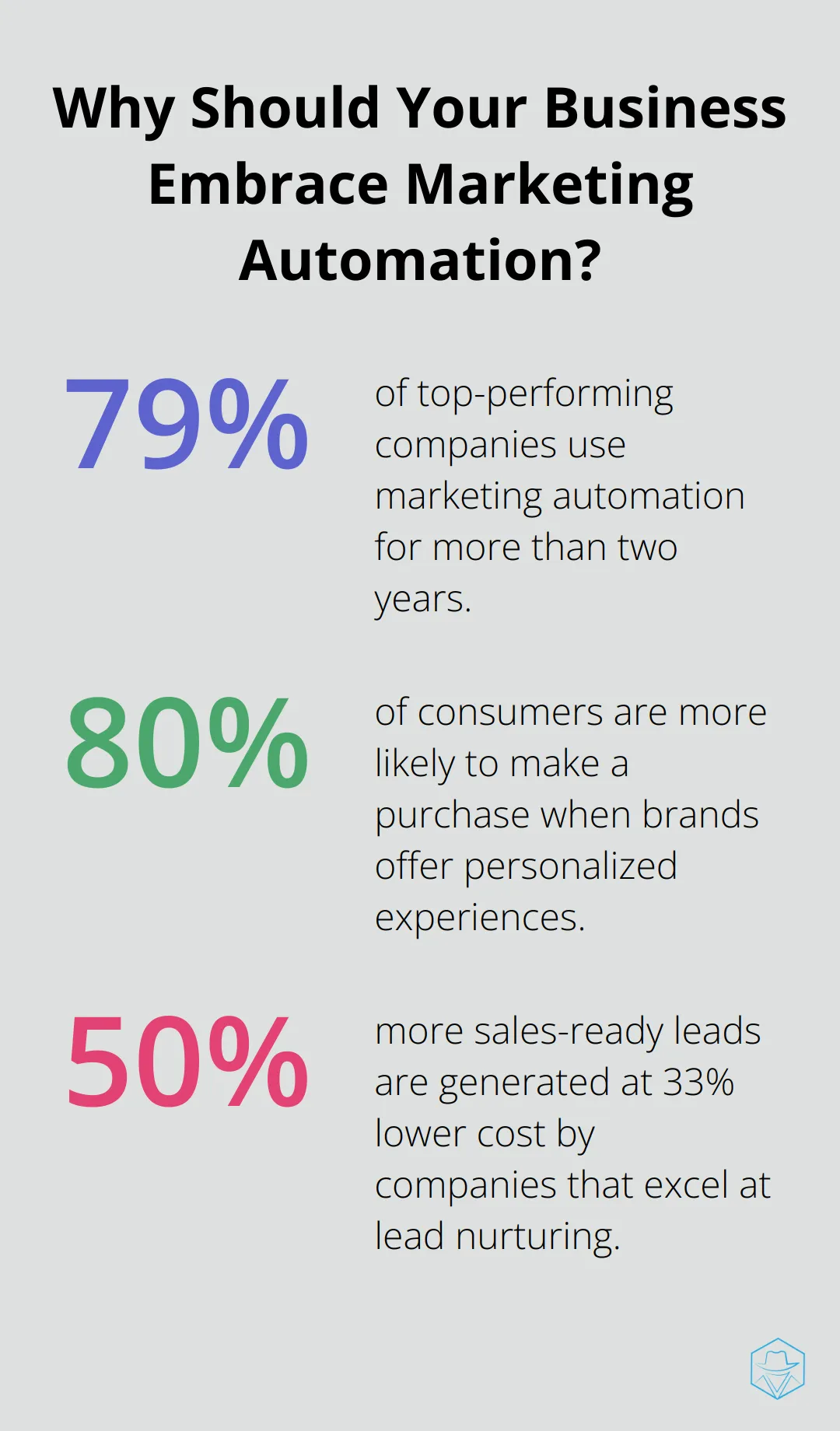
Consider platforms that offer AI-powered features for personalized experiences. A study by Epsilon found that 80% of consumers are more likely to make a purchase when brands offer personalized experiences.
Integrating with Existing Systems
After you select your platform, the next critical step requires integrating it with your existing CRM and sales tools. This integration creates a unified view of your customers and ensures smooth data flow between marketing and sales teams. Top-performing companies understand the importance of a well-integrated system, with 79% using marketing automation for more than two years (Salesforce).
You should ensure that your chosen platform can easily connect with your current tech stack. Look for pre-built integrations or APIs that allow for custom connections. This integration will enable you to leverage your existing customer data for more targeted and effective marketing campaigns.
Creating Effective Workflows
With your platform in place and integrated, you need to set up automated workflows. Start with simple workflows and gradually increase complexity as your team becomes more comfortable with the system. You might begin with a basic lead nurturing workflow that sends a series of emails based on a prospect’s interactions with your website.
As you progress, you can create more sophisticated workflows that incorporate multiple channels. For instance, you could set up a workflow that triggers a personalized message after a prospect has opened several emails but hasn’t converted. Companies that excel at personalization generate 40% more revenue from those activities (Gartner).
Measuring and Optimizing Performance
Implementing B2B marketing automation requires continuous measurement and optimization. You should regularly review your workflows based on performance data. The beauty of automation lies in its ability to provide real-time insights for continuous improvement.
Set clear KPIs (Key Performance Indicators) for your automation efforts. These might include metrics such as lead conversion rates, email open rates, or customer lifetime value. Use these KPIs to guide your optimization efforts and demonstrate the ROI of your automation investment.
Training Your Team
The success of your B2B marketing automation implementation depends heavily on your team’s ability to use the system effectively. Invest in comprehensive training for all team members who will interact with the platform. This training should cover not only the technical aspects of using the software but also best practices for creating effective automated campaigns.
Encourage ongoing learning and experimentation. As your team becomes more proficient with the platform, they’ll discover new ways to leverage automation for improved results.
Final Thoughts
B2B marketing automation has revolutionized how businesses engage customers and drive growth. Companies that implement effective automation strategies will see increased efficiency, better lead quality, and more effective nurturing processes. AI and machine learning will enhance personalization and predictive analytics, while integration between platforms will create a holistic view of the customer journey.
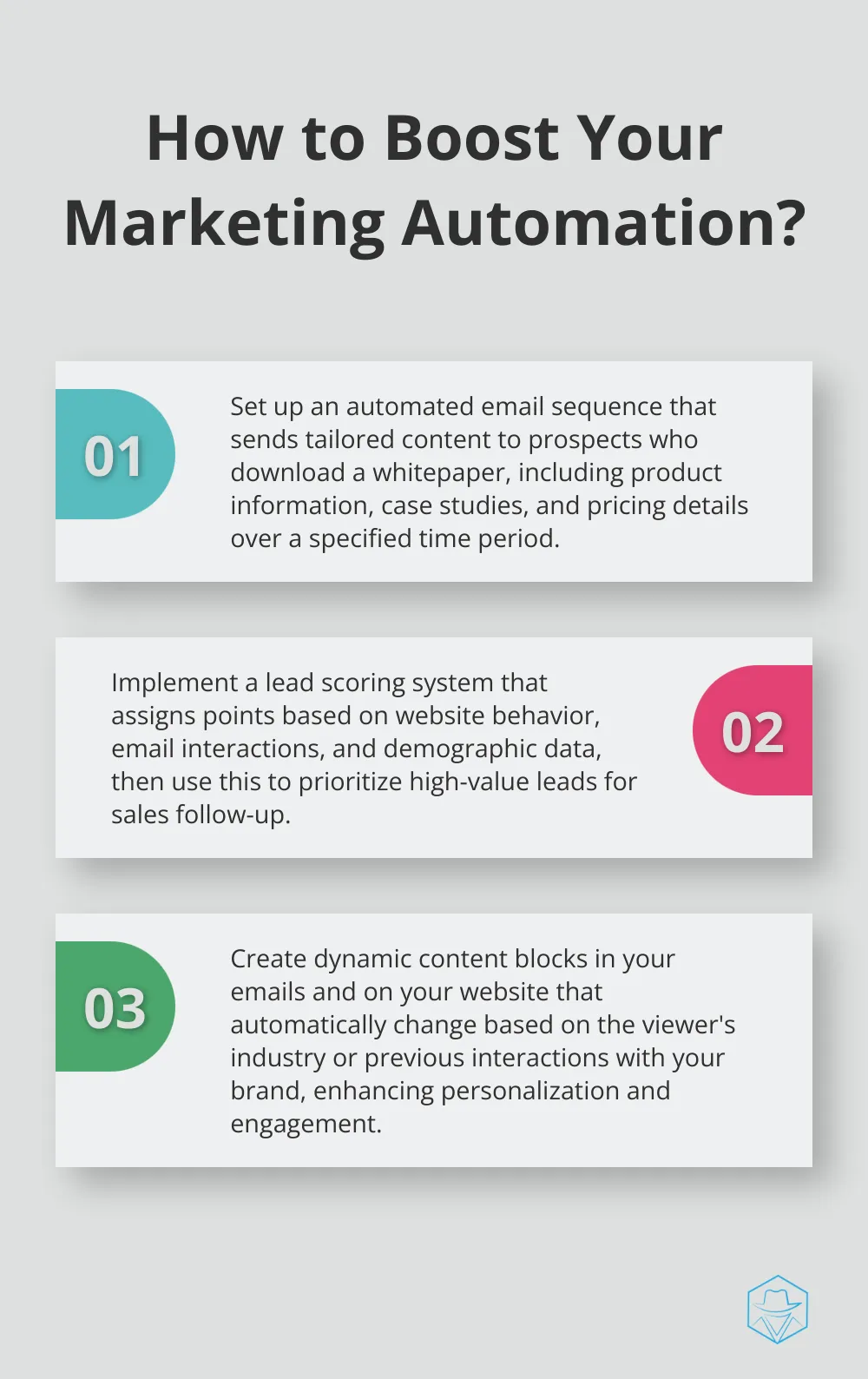
Businesses should assess their current marketing processes to identify areas where automation could have the most significant impact. Selecting a platform that aligns with specific needs and integrates well with existing tools is crucial for successful implementation. Continuous learning and optimization will ensure that marketing automation for B2B efforts yield the best possible results.
Drop Cowboy offers innovative features like Mimic AI™ for voice cloning and Smart Delivery™ for efficient global message delivery. These tools help businesses create more engaging and personalized marketing campaigns (while maintaining compliance). With the right strategy and tools, companies can drive meaningful business growth and stay ahead of the competition in today’s fast-paced digital landscape.
blog-dropcowboy-com
Related posts
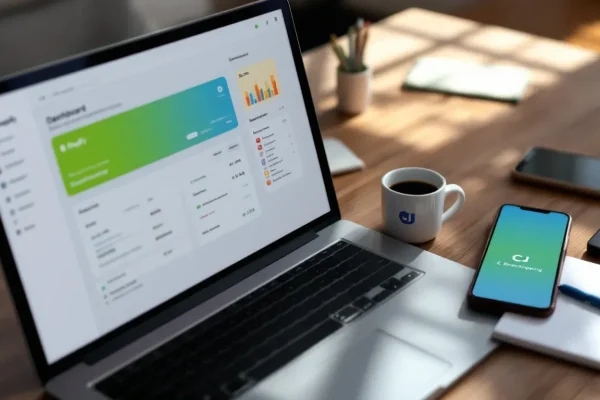
April 14, 2025
How to Integrate CJ Dropshipping with Shopify
Integrate CJ Dropshipping with Shopify easily and boost your e-commerce success. Get practical tips and seamless solutions for your online store today.

March 8, 2025
Marketing Strategy: Text and Cases Explained
Explore effective marketing strategy text and cases. Discover practical tools and insights for successful campaigns with real-world examples.
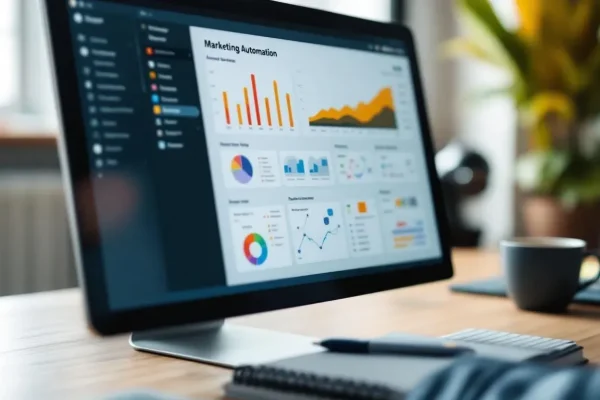
March 12, 2025
How to Create an Effective Marketing Automation Journey
Boost your business by creating an effective marketing automation journey. Streamline processes, engage customers, and drive growth effortlessly.

March 9, 2025
Top Ringless Voicemail Drop Software Solutions
Explore top ringless voicemail drop software for efficient customer outreach and boost engagement in your communication strategy.

April 17, 2025
Essential Shopify Apps for Successful Dropshipping
Discover the best Shopify apps for dropshipping to boost efficiency, streamline operations, and enhance customer experience effortlessly.

March 9, 2025
Creating Compelling Content with Marketing Text Generators
Create captivating content with marketing text generators. Discover trends, tips, and tools to boost engagement and achieve better results.